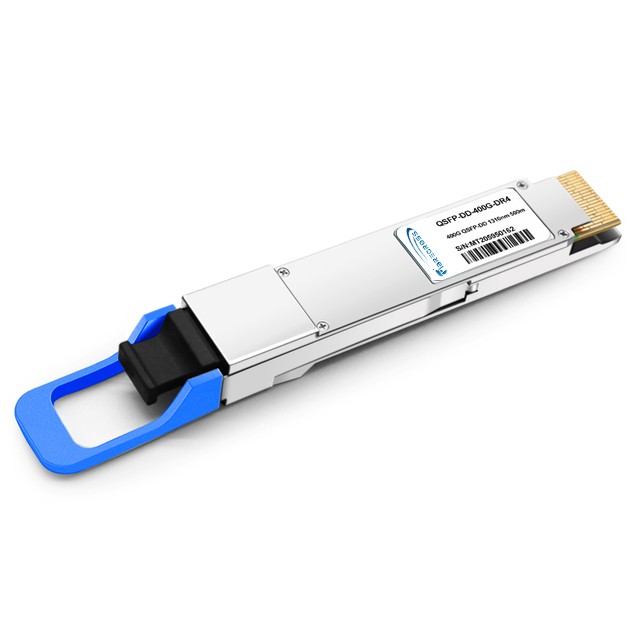Engineering the Future: 800G Transceivers – Architectures, Progress & Trends
As network demand surges with AI, cloud, and hyperscale data centers, the need for higher-speed interconnects is undeniable. 800G optical transceivers have become a core enabler of next-generation network infrastructure—offering both performance and scalability.
In this article, we dive into the main 800G optical transceivers architectures, examine real-world deployment progress, and explore technical challenges and future innovations shaping their adoption.

Deep Dive: 800G Transceivers Architectures
Engineered for throughput, 800G transceivers come in three primary configurations—each tuned to balance lane speed, modulation complexity, and deployment reach.
8×100G PAM4 Architecture
Modulation: PAM4 at 53 Gbaud
Structure: 8 × DAC/ADC pairs, 8 lasers, 8 optical paths
Multiplexing: 8-channel CWDM or LAN-WDM
This design delivers 800G by combining eight 100G lanes. While it leverages well-understood 100G technology, it requires dense optics and high fiber count (typically MPO-16). The signal integrity burden is significant due to tight PAM4 eye diagrams, demanding advanced DSP, equalization, and FEC. It’s best suited for short-reach (<2 km) intra-data center links.
4×200G PAM4 Architecture
Modulation: PAM4 at 106 Gbaud
Structure: 4 × DAC/ADC pairs, 4 lasers
Multiplexing: 4-channel CWDM or LAN-WDM
By halving the number of lanes and increasing the data rate per lane, this configuration reduces power and component count. While it improves scalability and density, the higher baud rate introduces more stringent design rules around jitter, crosstalk, and thermal stability.
800G Coherent Architecture
Modulation: 16QAM at 128 Gbaud
Structure: 4 × DAC/ADC pairs, 1 laser
Use Case: Metro/long-haul; up to 80 km and beyond
Coherent optics encode data across amplitude, phase, and polarization, offering unmatched spectral efficiency and reach. Fixed-wavelength or tunable lasers and sophisticated DSP enable 800G over DWDM systems with fewer fibers. This is the solution of choice for high-capacity data center interconnects (DCI) and backbone networks.
Current Progress: Where Is 800G optical transceiver Technology Being Deployed?
Hyperscale Cloud & AI Data Centers
Hyperscalers are deploying 800G optical transceivers in top-of-rack and spine-leaf networks to meet AI/ML training needs. A single GPU server might demand multiple 200G or 400G links—making 800G transceivers on switches not only logical but necessary.
OSFP and QSFP-DD800 modules are already in volume use
Breakout support (e.g., 2×400G or 4×200G) eases backward compatibility
800G SR8 and DR8 dominate short-reach server-switch links
Carrier & Metro Networks
Coherent 800G optical transceivers are gaining traction in DCI and metro transport:
Pluggable ZR/ZR+ modules fit directly into router slots
Reduce need for discrete DWDM platforms
Enable simpler IP-over-DWDM infrastructure
Examples include long-haul 800G optical transceiver deployments in national telecom backbones and emerging metro rollouts in cloud exchanges.
Financial, Research & High-Performance Enterprises
High-frequency trading, research clusters, and elite enterprise backbones are starting to implement 800G transceivers for core switching and inter-rack connections. The demand stems from needing ultra-low latency, high throughput, and future scalability.
Key Challenges in Engineering 800G Transceivers Solutions
1. Thermal and Power Constraints
800G optical transceivers push module power toward 14–18 W. OSFP form factors offer better cooling headroom compared to QSFP-DD. Some hyperscale deployments are considering liquid-cooled optics or enhanced airflow designs in racks.
2. Signal Integrity and Link Validation
At 100G or 200G per lane, PAM4’s narrow eye openings require:
Precision board layout and backplane routing
Active equalization and error correction
Advanced test equipment to verify BER, jitter, and pre-/post-FEC performance
Testing is no longer just about throughput—it’s a full signal chain discipline.
3. Fiber Infrastructure Compatibility
800G optical transceivers deployments need:
MPO-16 or new parallel optics cabling
High-precision connectors with low insertion loss
Polarity-checked trunk cables, especially in breakout use
Upgrading existing 12-fiber infrastructures often requires strategic planning.
What’s Next? Trends to Watch
Shift to 4×200G as the Standard
As 200G electrical SerDes and optics mature, the industry is pivoting to 4×200G architectures. Expect better energy-per-bit performance and simplified manufacturing by 2026.
Rise of 800G Coherent for DCI
Coherent modules are expected to become more common across metro and regional networks—enabling high-density wavelength services and simplifying DCI topologies.
Co-Packaged Optics on the Horizon
To mitigate signal integrity challenges beyond 800G, co-packaged optics (CPO)—where optics are integrated beside the ASIC—are in early development. While not mainstream yet, this technology will eventually redefine optical I/O.

Final Thoughts
For engineers architecting next-gen networks, 800G optical transceivers offer both opportunity and complexity. Whether selecting 8×100G PAM4 for leaf-spine switching or deploying 800ZR in metro links, a thorough understanding of modulation, optics, cabling, and power is essential.
The move to 800G transceivers is not just an upgrade—it’s a system-level evolution.
If you’re designing, evaluating, or deploying 800G optical transceiver solutions and need insights into integration, testing, or roadmap planning, stay tuned. This space is evolving rapidly—and engineering innovation is at its core.





